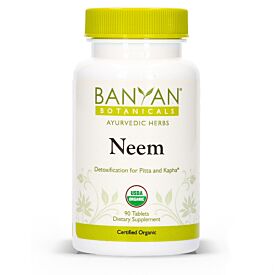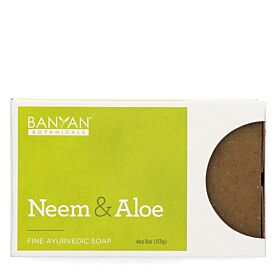Ayurvedic Herbs: Neem
/Ayurvedic Herbs
Ayurvedic herbs are one of the many chikitsas or treatments used in Ayurvedic medicine. These herbs are used as part of an herbal protocol recommended by an Ayurvedic professional. Thusly, all the Ayurvedic herbs should not be self-administered and Ayurvedic herbs should only be taken under-advisement of your Ayurvedic Counselor/Practitioner/Doctor and approved by your Primary Care Physician. The information on the Ayurvedic herb of Neem is only meant to educate you on the ways in which it is traditionally used in Ayurveda and is presented for educational purposes only. It is not intended as a substitute for the diagnosis, treatment, or advice of a qualified, licensed medical professional. The facts presented are offered as information only, not medical advice, and in no way should anyone infer that we are practicing medicine. Seek the advice of a medical professional for proper application of this material to any specific situation. Do not use the information found within this post to self-diagnose any medical conditions or treat any health problems or diseases. The information provided is not intended to prescribe or be taken as medical advice. If you have or suspect that you have a medical condition please contact your health care provider immediately.
“The essence of all beings is Earth. The essence of Earth is Water. The essence of Water is plants. The essence of plants is the human being.
Esam bhutanam prthivi rasha, prthivya apo raso-pam osadhayo rasa, osadhinam puruso rasah.”
Neem
Latin Name: Azadiracta indica
Plant Family: Meliaceae
English Name: Neem
Sanskrit Name: Nimba- Hara was scared to Shiva and Harate means “to carry away” like disease
Part Used: bark, leaves
Botanical Description: tree is 8-10 meters in height; flowers are small and white; fruit is green and hard until ripe when it turns yellow and soft
Taste (Rasa): bitter
Energetics (Virya): cooling
Post-Digestive Effect (Vipaka): pungent
Quality (Guna): light, dry
Dosha: PK- V+
Tissues (Dhatu): plasma (rasa), blood (rakta), fat/adipose tissue (meda), bone (asthi), reproductive tissue (shukra [male]/artava [female])
Systems (Srotamsi): circulatory (rakta vaha srotas), digestive (anna vaha srotas), respiratory (prana vaha srotas), urinary (mutra vaha srotas), reproductive (shukra/artava vaha srotas)
Constituents: triterpenes (niimbin, nimbidin); limonoids (azadirachtin, margocin, margocilin); fixed oil (salannin, nimbinin); polysaccharides
Actions: bitter tonic, antipyretic, alterative, anthelmintic, antiseptic, antiemetic
Ayurvedic Actions: prevents skin diseases and itching (kusthakandughna); anthelmintic (krmighna), absorbs fluids from the colon and cause constipation (grahi); heals wounds (vranaghna); alleviates fevers (jvaraghna); alleviates burning sensations (dahaprasamana); benefits the eyes (netrya); relieves hyperacidity (amlapittaghna); alleviates bleeding from high pitta (raktapittaghna); purifies the blood (raktasodhana); destroys poisons (visaghna)
Biomedical Actions: alterative, antipruritic, anti-inflammatory, antipyretic, antiseptic, antibacterial, antifungal, antiprotozoal, antimalarial, anthelmintic, bitter tonic, antacid, hypoglycaemic
Indications: skin, digestion, lungs, metabolic, mouth, fevers, reproduction
Precautions: diseases of cold and tissue deficiency generally, high Vata, considered bad for the heart and unpleasant for the mind
Preparations: infusion (hot or cold), decoction, powder, paste, medicated ghee, medicated oil
Formulations: nimbadichurna, numbarishta, numbaharidra
Neem is said to have come from amrita the nectar of immortality that is held in the hand of Dhanvantari. It is especially beneficial for Pitta and Kapha prakruti (constitution) and vikruti (imbalances). Neem has an affinity for the skin, blood, and the digestive tract.
References
Frawley D. Yoga & Ayurveda: Self-Healing and Self-Realization. Twin Lakes, Wisconsin: Lotus Press; 1999.
Frawley D, Lad V. The Yoga of Herbs: An Ayurvedic Guide to Herbal Medicine. Twin Lakes, Wisconsin: Lotus Press; 2001.
Gogte VM. Ayurvedic Pharmacology & Therapeutic Uses of Medicinal Plants: Dravyagunavignyam. New Delhi, India: Chaukhambha Publications; 2016.
Pole S. Ayurvedic Medicine: The Principles of Traditional Practice. Philadelphia, PA: Singing Dragon; 2013.









